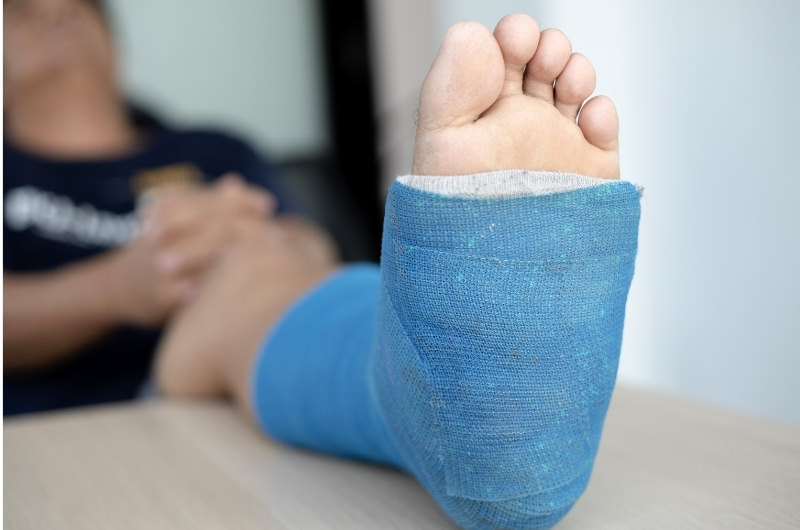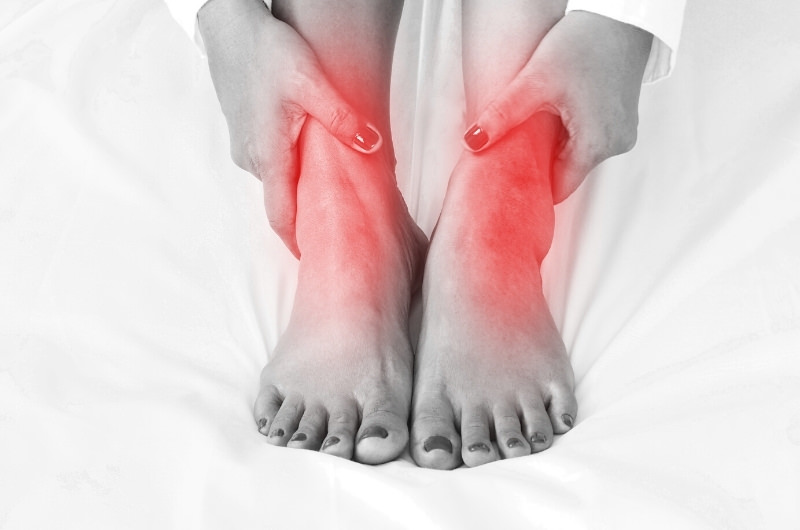Pain and muscle spasms are common among patients who had ankle or foot surgery. It can take up to 3-4 months before you can fully recover from them. While there is no medicine to stop or prevent muscle spasms, you can manage the pain by drinking pain relievers, applying heat or cold therapy, and stretching your leg. In addition, making sure your cast is not too tight and supplying a good amount of electrolytes to your muscles by drinking water and eating healthy food will prevent intense pain and muscles spasms.
Recovering from ankle surgery will test your patience as it comes with post-surgical pain and other discomforts in your foot. Although it could be tiring and annoying, managing such pain after surgery will help speed up your healing progress.
Thus, it is important to look out for signs like muscle spasms to treat them immediately and avoid other complications from occurring.
What causes muscle spasms?
While post-surgical pain commonly occurs in patients who have undergone any surgical method, some also experience pain associated with muscle spasms.
Muscle spasms or cramps are the involuntary and uncontrollable movement of your muscles. These are mild to severe painful twitching of your affected muscle.
You may also feel like your muscle is twisted into a tight and hard knot.
Muscle spasms can affect everyone regardless of age and can occur in almost every part of the body. However, if you injured your ankle, got into surgery, and had to wear a cast, you will most likely get muscle spasms now and then.
Other factors that may trigger muscles spasms include the following:
- Dehydration
- Exercising in the intense heat
- Low blood supply or restriction of blood circulation
- Low levels of electrolytes (such as magnesium, potassium, and calcium)
- Muscle fatigue due to overexercising
- Nerve damage or involuntary nerve discharges
- Sedentary life or too much sitting down
- Stress
How to stop muscle spasms on my injured ankle?
There are yet no medicines or injections to stop or prevent muscle spasms. But don’t worry because you can resolve it in the comfort of your own home.
However, remember to take it easy especially, when you’re in your non-weight-bearing phase of ankle recovery.
Take your pain medications
Muscle spasms can be excruciatingly painful which, can last up to 15 minutes. Taking pain relievers, as your doctor suggests, will help you manage the pain.
You should take them every four hours. If the pain worsens after 30 minutes, inform your doctor or nurse for another dose or additional medications.
Below are some of the pain medicines that your doctor may prescribe:
- Opioids. Intravenous opioids include fentanyl, hydromorphone, morphine, etc. Oral pills include oxycodone or oxycodone with acetaminophen.
- Nonsteroidal anti-inflammatory drugs (NSAIDs). Drugs like ibuprofen, naproxen sodium, celecoxib, or ketorolac.
- Local anesthetics. Lidocaine and bupivacaine to numb the pain.
- Psychoactive drugs. Anti-anxiety and anticonvulsants medications.
- Muscle relaxants. Antispasmodics or centrally acting skeletal muscle relaxants (SMRs) such as carisoprodol, chlorzoxazone, etc.
Take note that these medications will result in different side effects such as headache, nausea, vomiting, drowsiness, problems in bowel movement, etc.
Talk to your doctor about managing these symptoms.
Cold or hot therapy
Applying a cold compress relieves pain by reducing the swelling and inflammation on the site of injury. Use ice packs or frozen gel packs over a towel so that you don’t wet your cast.
On the other hand, applying heat will help increase blood flow in the affected area. It will relax the tension between your muscles or joints to soothe discomfort or pain caused by muscle spasms.
Massage your ankle
If you’re wearing a cast, this might be less effective. But you can still try to tap or gently touch (don’t pinch or stick anything) your injured ankle while propping it on a pillow.
Elevate and stretch your foot

The first thing people usually do when foot cramps occur is stretch their legs out to minimize the tension on the affected muscles. However, if you’re recovering from surgery, it might be hard and painful for you to reach your leg and stretch the muscle.
Putting your injured ankle over a pillow when you’re sitting or lying down might help. It will improve blood flow in your ankle and reduce the risk of intense muscle spasms or cramps.
However, too much sitting down will trigger muscle spasms to occur. So, it is best if you can do simple motion exercises. Talk to your doctor about this, especially if you’re just in the first week of recovery and you’re not allowed to move around just yet.
Simple motion exercises include the following:
- Ankle alphabets. With your ankle propped up on a pillow, point your toes and slowly trace the alphabets 1-3 times.
- Figure 8’s. Still, with a pillow underneath your ankle, draw figure 8s with your toes repetitively.
Most stretching exercises for an injured ankle will need you to have your cast off. Talk to your doctor about what simple exercises you can do to prevent spasms.
Check your cast
Another thing that can trigger muscle spasms to occur is if your cast is too tight. When this is the case, your blood can’t circulate properly.
Sufficient blood supply improves muscular functions and increases healing progress. Thus, if it is restricted, then you are likely to suffocate your muscles.
Your cast may be too tight if:
- You can’t wiggle the fingers in your toes
- You feel numbness or stinging, burning, and tingling pain in your foot
- There is a cold bluish or pale red discoloration of the skin surrounding your cast
You need to contact your orthopedic surgeon about this so that your cast will be fixed or replaced.
Stay hydrated and eat a well-balanced meal
Drinking water is very beneficial for your health and can also prevent muscle spasms or cramps.
Fruits and vegetables rich in minerals like magnesium, potassium, and calcium can produce essential electrolytes and energy that your muscles need.
Potatoes, sweet potatoes, and bananas are examples of potassium-rich food.
Nuts and seeds like almonds and pumpkin seeds are rich in magnesium while, dairy products and green leafy vegetables are the sources of calcium.
Conclusion
Muscle spasms commonly happen after surgery and can occur with mild to severe pain.
There is no definite cause why these may happen but, common factors like muscle fatigue, overexercising, not stretching, dehydration, stress, blood flow restriction at the site of injury, and nerve damage will result in muscle spasms or cramps.
Some frequent and intense muscle spasms may indicate an underlying health issue, but if you’re recovering from an ankle injury then, that might not be the case. Taking pain medications as prescribed by your physician will help you manage the pain caused by muscle spasms.
Applying hot or cold therapy and elevating and stretching your foot may also help in releasing tension between your muscles.
Furthermore, making sure that your cast is not too tight, staying hydrated, and giving essential minerals to your body may prevent muscle spasms and cramps.


